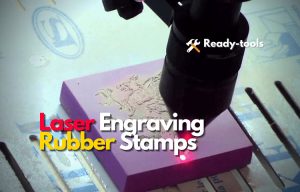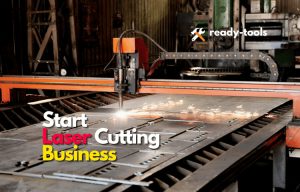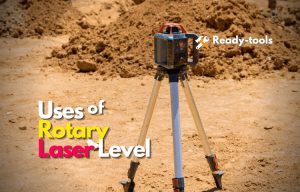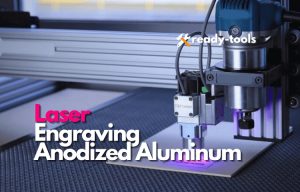The modern consumer has access to various cutting systems and equipment, all of which are available in a wide range of price points. The vast majority of metal-cutting equipment, on the other hand, falls into either the plasma or laser category when it comes to high output levels.
Plasma and laser cutting machines both use computer numeric control (CNC), which contributes to their high level of precision. Despite this similarity, the two types of cutting machines are best suited for differing kinds of jobs.
We hope that by the end of this article, your options will be more clear to you. We will do this by briefly explaining plasma cutting versus laser cutting and providing you with the information you need to choose the appropriate system for your requirements.
An Overview of Laser Cutting:
In the 1960s, one of the first times lasers were used for industrial uses was when a laser etching device was used to drill a hole in gemstone dies. Diamond dies are a type of wire drawing die made of diamonds that are used for trying to draw a fine wire of hard metals.
This was one of the first times lasers were used for industrial purposes. It wasn’t until the 1970s that other sectors, such as makers of sheet metal and textiles, were able to consider laser cutting as a practical alternative for their operations.
Around the same time, another sector that became interested in laser cutting was the aircraft industry. This was likely because laser cutting can produce dependable and clean cuts.
In the initial periods of laser cutting, the materials had to be cut analogous to cutting them manually, using procedures such as sawing and shearing.
This is because the level of development of computer technology had not yet reached a stage where it could be used to direct cutting.
Laser cutting is gradually becoming one of the most dependable and diverse techniques of metal products that is now accessible. This is because laser cutting increased with the advancement of computers and technology.
What Is Laser Cutting?
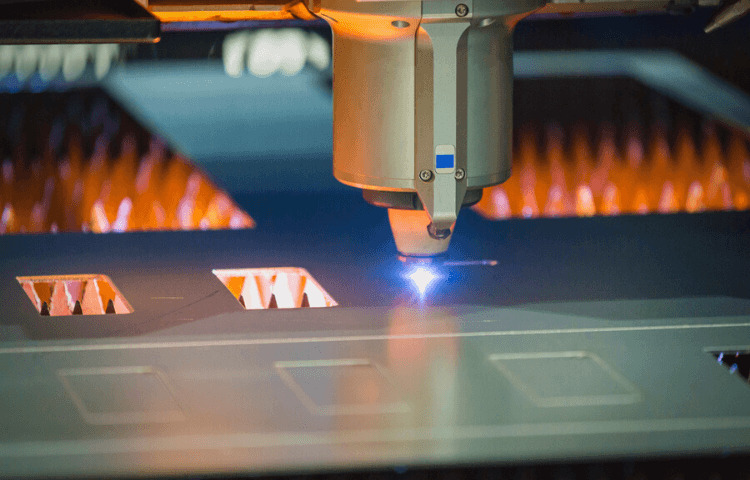
The cutting procedure with a laser has been recognized for some time as risk-free, productive, and dependable. High-powered lasers that are controlled by computers are used in the fabrication of laser cutting machines.
The system’s primary component is an optical fiber loaded with elements like thulium, erbium, and dysprosium. When combined with oxygen, nitrogen, or compressed air, fiber lasers can cut through a broad range of metals with high accuracy. Laser cutting machines typically have several functions and may perform various tasks.
The Advantages of Laser Cutting:
- When compared to the traditional way of cutting, the use of a laser cutting machine offers several clear advantages, including the following:
- Small slots that have been cut out and the cutting surface may be welded straight onto without grinding.
- Rapid cutting speed: the thin sheet cutting speed may reach up to 10 meters per minute, which is significantly quicker than plasma cutting.
- The excellent cutting quality is characterized by a low oblique cutting edge, soft surface roughness, and a small amount of deformation.
- Extremely high precision, with a positioning accuracy of up to 0.05 mm and a repositioning accuracy of up to 0.02 mm.
- A wide range of materials can be sliced through in addition to metal and can also slice through wood, plastic, rubber, PVC, leather, fabrics, organic glass, and so on.
- It is suited for components with a complex shape because the cutting precision is better, the speed is rapid, and the sheet deformation is more minor; however, the cutting thickness is restricted. Because the blanking cost is higher and the cleanliness of the plate is also necessary, in most cases, the plate with a thickness of fewer than 8 millimeters is blanked using a laser cutting machine, which demands a high level of precision. This is done because the plate must also be clean.
The Disadvantages of Laser Cutting:
- The most crucial factor is the price. Higher costs are required for both the original investment and subsequent upkeep.
- At the moment, laser cutting of the thin plate is the method that offers the best value for money. However, the efficiency is limited while cutting the thick plate; therefore, laser cutting is not ideal unless there is a high need for the quality of the cut.
An Overview of Plasma Cutting:
A nutshell, plasma cutting is a method utilized in the process of slicing through conductive metals, including but not limited to steel, brass, titanium, copper, aluminum, and other similar materials.
Cutting with plasma is not limited to being done in metal fabrication businesses with massive CNC plasma cutting equipment. It is also possible to perform it by hand with the assistance of a plasma torch, also known as a plasma arc, plasma cutter, or plasma cannon, depending on the context.
However, because CNC plasma metal working machines use mechanization to direct the route of the torch, this cutting technique is preferable in industrial uses where numerous and exact cuts are required. This might be expected, given the nature of the CNC plasma metal cutting machines and how mechanization works.
What Exactly is a PLASMA CUT?
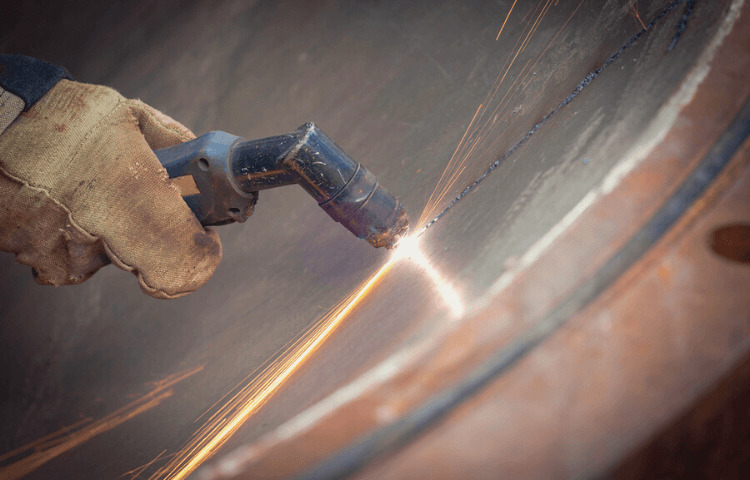
Plasma cutting was created before laser cutting, and it didn’t become widely employed until the 1950s. Before this, the metal was cut using a flame, which is precisely what it sounds like.
However, other metals, such as steel material, aluminum, or copper, could not be cut using a flame, which led to the development of the plasma cutting technique. A supersaturated channel of electrically conductive gas is used in the plasma cutting process.
This gas is a vessel to carry energy from a power supply to the material being cut by traveling via a plasma torch. Plasma cutting is a method that is used to cut metal. Much like a laser cutter, a plasma cutter eventually works by melting the metal to cut through it.
The Advantages of Plasma Cutting:
- Cutting a plate with a medium thickness can attain a very high cutting speed, which is significantly greater than laser cutting and flame cutting.
- The initial equipment expenditure is far less than required for the laser, and the ongoing maintenance expenses are considerably more affordable.
- Extensive cutting range, all steel plates can be cut, rapid cutting speed, high efficiency, greater cutting accuracy and fineness than NC oxyfuel cutting. Wide cutting range. One drawback is that it will be tough to cut thick plates, particularly for vessels with a thickness of 20mm or more. A more considerable plasma power will be required at this time, undoubtedly increasing the equipment’s expenditures.
The Disadvantages of Plasma Cutting:
- Inadequate perpendicularity of the cutting mat: there will be a comprehensive oblique latest technology on the side of the cutting mat, and the perpendicularity will be insufficient.
- Make more of the slag that is created during the cutting process. The slag formed during the cutting process will be located at the bottom of the cutting surface. This slag must be ground up and removed before the post-processing can continue without being negatively impacted, increasing labor costs.
- Plasma cutting is based on a theory that ensures the production of hazardous dust and arc light throughout the cutting process. This principle dictates that plasma cutting will create harmful gases. However, cutting using underwater plasma has also been employed as a method to circumvent this issue.
- In the later stages, it will require a more significant amount of cutting nozzle, which comes at an extremely high cost.
Comparing the Features of a Laser Cutting vs. Plasma Cutting:
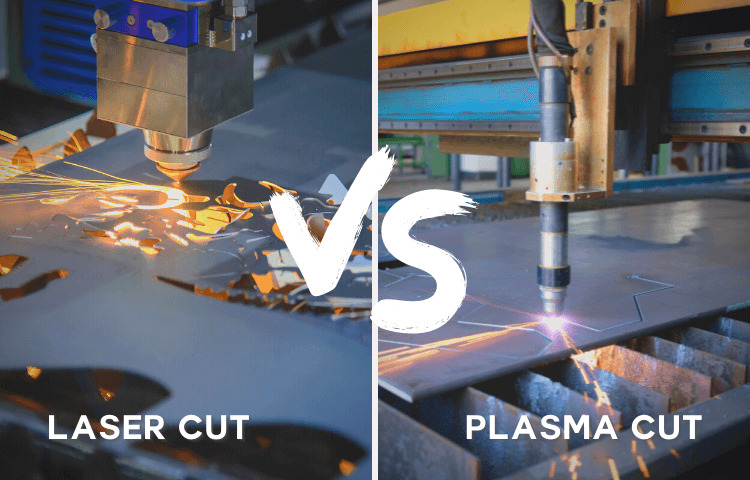
- Lasers have an operating cost typically higher than plasma cutters, but they provide a degree of detail that cannot be achieved by plasma cutting. As a result, lasers are fantastic for etching intricate details or carving off subtle patterns from the metal, but plasma is superior for cutting through metal in more straightforward ways.
- Plasma cutters are capable of slicing through large sheets of metal with ease. In general, a plasma cutter can penetrate metal up to a thickness of 1.5 inches. On the other hand, lasers can cut through materials with thicknesses of one inch of steel, three-quarters of an inch of stainless steel, and half an inch of aluminum.
- Lasers have been used to cut through various materials, including wood, plastic, glass, and others, but plasma can only cut through materials that conduct electricity. This is because the plasma employs electrically conductive gas rather than a beam of optic light to generate the incisions in the material.
- Copper and other highly shiny materials are impossible to cut with a laser; therefore, plasma cutting is likely your best bet when working with materials of this nature. Plasma, however, can penetrate any conductive metal, independent of its surface.
- Since laser cutting has a narrower tolerance of just.002 inches, it is ideally suited for cutting pieces that require accuracy as well as those that have detailed notching.
- We control the laser and plasma cutting machines we create with CNC, which stands for computer numerical control. This results in higher levels of accuracy and a faster rate of output.
Features of Laser Cutting and Plasma Cutting:
Safety:
Specific adjustments are necessary to avoid injury using plasma or laser cutters. Plasma cutting devices require individual safety measures for protection against glare, noise, and fumes; nevertheless, this technology does not require specific gear and a safety cage around the entire system like laser cutting machines occasionally do.
Startup Cost:
In terms of the initial investment, plasma is incomparable to any other option for a metal business, making it the best choice for those trying to get the most outstanding value for their money.
The majority of shop-quality CNC plasma cutting machines can be acquired for between $50,000 and $100,000. This price range is determined by the kind and size of the machine and its features.
The cost of a laser, on the other hand, is significantly higher. While it is possible to purchase a used laser cutter for somewhere in the neighborhood of $250,000, a brand new machine typically costs more than $300,000 and can go as high as one million dollars.
When compared to laser, plasma has a far lower initial investment cost, making it the most cost-effective choice in this comparison.
The Cost of Operation:
Even after accounting for operational expenses like consumables, abrasives, electricity, gas, and periodic maintenance, plasma emerges as the unquestionable victor in this comparison.
The average cost to operate a CNC plasma cutting machine is around $15 per hour, whereas the average price to use a laser cutting machine is approximately $20 per hour.
Because specific allowances need to be made, the previously mentioned safety concerns also contribute to an increase in the cost of running a laser cutting system.
Performance Comparisons Between Both Options:
This study, which Hypertherm carried out, will likely be of assistance to you if you are still unsure whether plasma or laser is superior for the metalworking applications you have in mind.
ISO ranges performed similarly on mild steel of varying thicknesses in experiments in which X-Definition plasma cutters and fiber lasers were pitted against one another. Even after one thousand stars, plasma demonstrated a lower average edge departure from the perpendicular and decreased variability in edge deviation while cutting through mild steel 6 millimeters thick.
This was the case at speeds chosen to improve quality and productivity. The same findings were obtained using mild steel with a thickness of 12 millimeters. In addition, the plasma machine produced better edge quality, perpendicularity, and hole quality. Plasma also offered exceptional hole quality.
What sets a plasma cutter apart from a laser cutter?
When cutting through metal, a laser cutter uses a laser beam, whereas a plasma cutter uses gas heated to a very high temperature.
How much does it cost to purchase a CNC plasma cutter?
The price of a CNC plasma cutting machine may range anywhere from $15,000 to $300,000, depending on the device’s kind, size, and features. Although this is a broad range, the great majority of CNC plasma cutting machines marketed in today’s market may be purchased for much less than $100,000.
What kinds of things can be created using a plasma cutter?
In almost every metal fabrication business, you’ll find a torch as blindingly brilliant as the plasma cutter it’s attached to. This method, which involves slicing through enormous sheets of metal of varying thicknesses, produces various metal things, including gates, signs, and sculptures.
Conclusion:
In the end, cutting using a laser is superior to cutting with plasma for most materials. It is also more exact, producing cuts that are cleaner and with less distortion. However, there are some materials that plasma cutting works better on, so it is essential to consider both possibilities before selecting.

